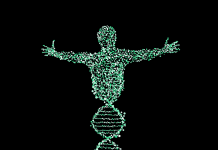## Introduction to Retrieval-Augmented Generation (RAG) Systems
Retrieval-Augmented Generation systems represent a new approach in the field of artificial intelligence, where they blend the strengths of two distinct components: a neural network and a retrieval system. These systems are designed to improve the generation of textual content by incorporating information directly retrieved from a vast database of documents. By leveraging external knowledge, RAG systems aim to produce more informative, accurate, and contextually relevant text.
## Key Components of RAG Systems
### Neural Network
At the core of RAG systems is a neural network, typically a transformer-based model, that generates text based on the input it receives. This component is trained to understand and produce human-like text, making it capable of handling a wide range of language-based tasks.
### Retrieval System
Integral to the RAG architecture, the retrieval system queries a database to find relevant documents or text snippets that are contextually related to the input query. These documents are then fed back into the neural network to inform the generation process, ensuring that the output is not only relevant but also enriched with accurate data.
## Accuracy and Reliability of Content Generated by RAG Systems
### Advantages in Content Generation
RAG systems enhance the generation of text by providing access to a broader range of information than what is contained within the model itself. This approach can significantly increase the factual accuracy of the content produced, as the system has direct access to external data sources during the generation process. Moreover, the integration of retrieved information helps in maintaining relevance, particularly in responses to complex queries or topics that require up-to-date knowledge.
### Challenges in Ensuring Reliability
Despite the advancements offered by RAG systems, they face challenges that can impact the reliability of the content they generate. One primary concern is the dependency on the quality of the data in the retrieval database. If the source data is outdated, biased, or incorrect, the generated content will likely reflect these flaws. Additionally, the process of integrating retrieved data with the generated text can sometimes lead to inconsistencies, especially if the system fails to accurately align the context of the input with the information retrieved.
### Evaluating Accuracy
To assess the accuracy of a vectorize RAG system, it is essential to consider both the source of the retrieved documents and the ability of the neural network to synthesize this information effectively. This evaluation typically involves comparing the generated content against established facts or trusted sources and examining the coherence and relevance of the text in relation to the initial query.
## Enhancements in RAG Technology
### Improvements in Retrieval Methods
Advancements in retrieval methods continue to enhance the performance of RAG systems. More sophisticated indexing and querying techniques have been developed to improve the precision of the retrieved information. Additionally, machine learning models are increasingly capable of understanding more nuanced aspects of language, which aids in better matching the retrieved data with the generation needs.
### Continuous Learning and Updates
The dynamic nature of knowledge necessitates continuous updates to the databases used in RAG systems. Implementing automated processes to regularly refresh the retrieval databases can help maintain the accuracy and relevance of the information. Moreover, ongoing training of the neural network component ensures that the system remains adept at integrating and utilizing new information effectively.
## Conclusion
RAG systems represent a significant step forward in the generation of text, offering improvements in accuracy and contextual relevance by leveraging external databases. While they present remarkable potential, the precision and dependability of these systems largely depend on the quality of the retrieved data and the sophistication of the integration process. As technology advances, continuous enhancements in retrieval accuracy and neural network capabilities are critical to fully realizing the benefits of RAG systems in various applications.

















